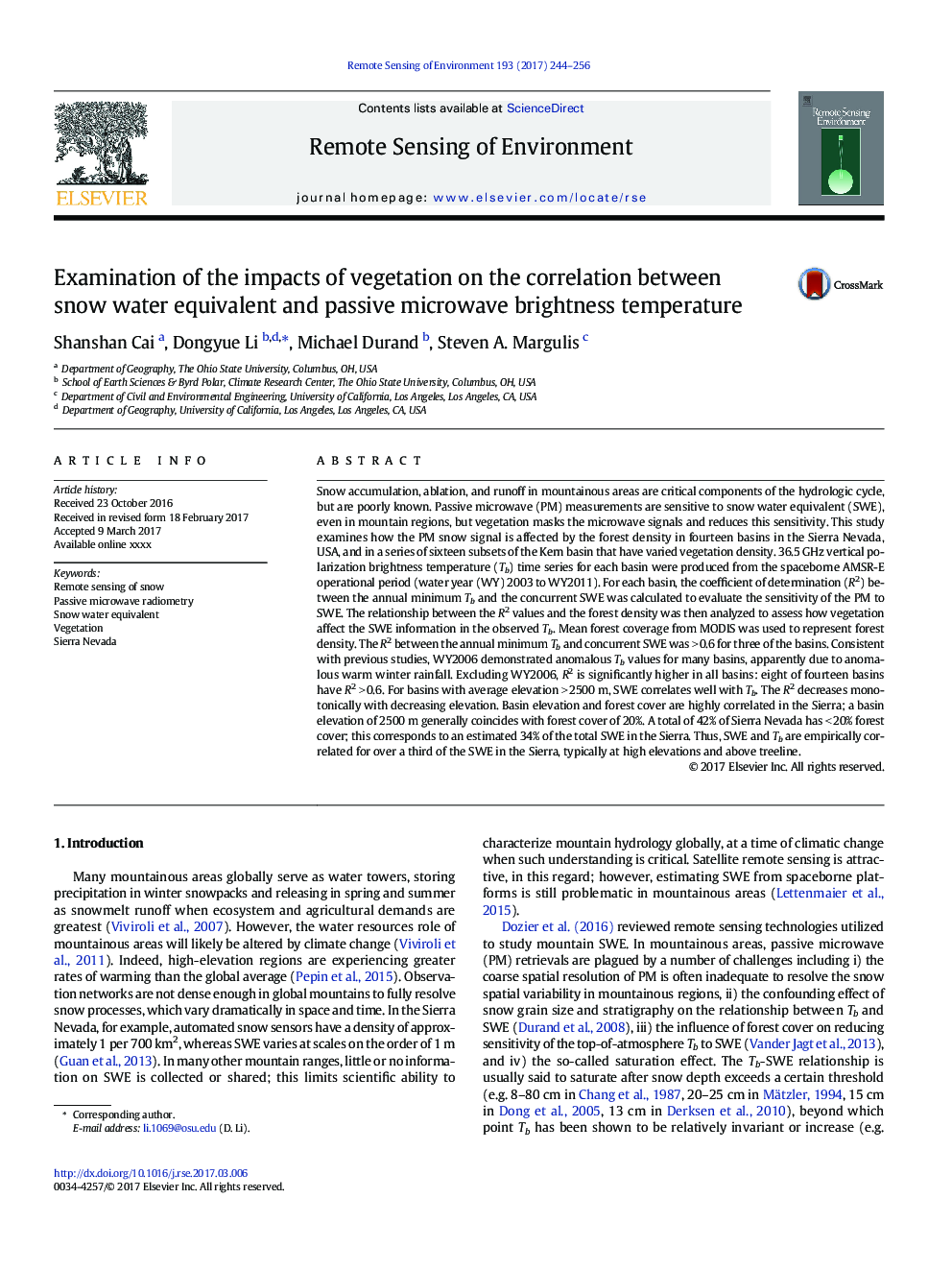| کد مقاله | کد نشریه | سال انتشار | مقاله انگلیسی | نسخه تمام متن |
|---|---|---|---|---|
| 5754711 | 1621207 | 2017 | 13 صفحه PDF | دانلود رایگان |
عنوان انگلیسی مقاله ISI
Examination of the impacts of vegetation on the correlation between snow water equivalent and passive microwave brightness temperature
ترجمه فارسی عنوان
بررسی اثرات پوشش گیاهی بر همبستگی معادل آب برف و دمای روشنایی مایکروویو منفعل
دانلود مقاله + سفارش ترجمه
دانلود مقاله ISI انگلیسی
رایگان برای ایرانیان
کلمات کلیدی
سنجش از دور از برف، رادیومتری مایکروویو منفعل، معادل آب برف، زندگی گیاهی، سیرا نوادا،
موضوعات مرتبط
مهندسی و علوم پایه
علوم زمین و سیارات
کامپیوتر در علوم زمین
چکیده انگلیسی
Snow accumulation, ablation, and runoff in mountainous areas are critical components of the hydrologic cycle, but are poorly known. Passive microwave (PM) measurements are sensitive to snow water equivalent (SWE), even in mountain regions, but vegetation masks the microwave signals and reduces this sensitivity. This study examines how the PM snow signal is affected by the forest density in fourteen basins in the Sierra Nevada, USA, and in a series of sixteen subsets of the Kern basin that have varied vegetation density. 36.5Â GHz vertical polarization brightness temperature (Tb) time series for each basin were produced from the spaceborne AMSR-E operational period (water year (WY) 2003 to WY2011). For each basin, the coefficient of determination (R2) between the annual minimum Tb and the concurrent SWE was calculated to evaluate the sensitivity of the PM to SWE. The relationship between the R2 values and the forest density was then analyzed to assess how vegetation affect the SWE information in the observed Tb. Mean forest coverage from MODIS was used to represent forest density. The R2 between the annual minimum Tb and concurrent SWE was >Â 0.6 for three of the basins. Consistent with previous studies, WY2006 demonstrated anomalous Tb values for many basins, apparently due to anomalous warm winter rainfall. Excluding WY2006, R2 is significantly higher in all basins: eight of fourteen basins have R2 >Â 0.6. For basins with average elevation >Â 2500Â m, SWE correlates well with Tb. The R2 decreases monotonically with decreasing elevation. Basin elevation and forest cover are highly correlated in the Sierra; a basin elevation of 2500Â m generally coincides with forest cover of 20%. A total of 42% of Sierra Nevada has <Â 20% forest cover; this corresponds to an estimated 34% of the total SWE in the Sierra. Thus, SWE and Tb are empirically correlated for over a third of the SWE in the Sierra, typically at high elevations and above treeline.
ناشر
Database: Elsevier - ScienceDirect (ساینس دایرکت)
Journal: Remote Sensing of Environment - Volume 193, May 2017, Pages 244-256
Journal: Remote Sensing of Environment - Volume 193, May 2017, Pages 244-256
نویسندگان
Shanshan Cai, Dongyue Li, Michael Durand, Steven A. Margulis,
